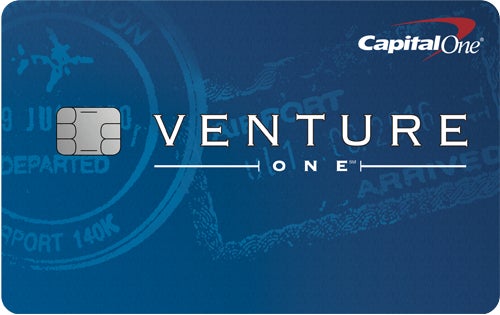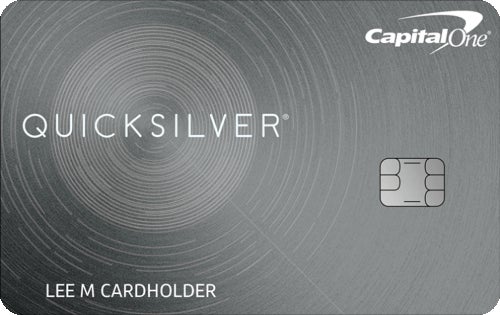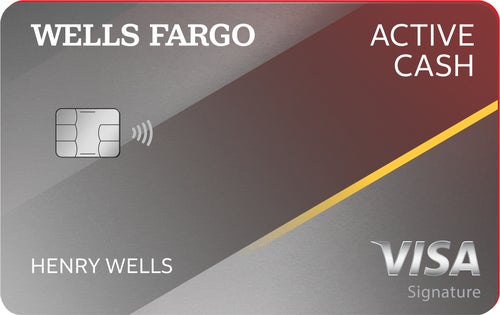Despite the Capital One VentureOne Rewards Credit Card* being marketed as a travel card, the Capital One Quicksilver Cash Rewards Credit Card* is the more lucrative choice for both your travel and everyday spending as it earns a higher cash-back rate.
The VentureOne does offer an additional travel perk of auto rental insurance*, but that doesn’t outweigh the value of the Quicksilver’s rewards. The Quicksilver still comes equipped with travel accident insurance*, and neither card has foreign transaction fees.
Rewards
Winner: Capital One Quicksilver
The Quicksilver offers 1.5% cash back for every purchase, compared to the 1.25x miles per dollar of the VentureOne. They also respectively earn 5% cash back and 5x miles per dollar for rental cars and hotels booked through Capital One Travel.
No matter how you slice it, the Quicksilver will provide more rewards than the VentureOne for the same amount of spending.
Welcome bonus
Winner: Tie
Here are the welcome bonuses for both cards:
- Capital One VentureOne: Earn a bonus of 20,000 miles once you spend $500 on purchases within three months from account opening
- Capital One Quicksilver: Earn a $200 cash bonus after spending $500 on purchases within three months from account opening
As long as you choose to redeem your 20,000 miles with the VentureOne for past travel expenses or booking travel through Capital One Travel, the bonus will equal $200 in value. Both welcome bonuses offer the same value for the same amount of spending.
Fees
Winner: Tie
Neither card asks for an annual fee or any foreign transactions fees. They both have late payment fees, a cash advance fee and a balance transfer fee, so neither card gains any ground here.
Travel benefits
Winner: VentureOne
The VentureOne Rewards card has a slight edge here thanks to the addition of its auto rental insurance* benefit. The Quicksilver offers cardholders extended warranty protection* and travel accident insurance*, but no auto rental insurance.
It is worth noting that the Quicksilver has limited redemption options for travel compared to the VentureOne. If you were planning to utilize mile transfers, you could only do so with the VentureOne. However, Capital One doesn’t partner with many US airlines, so unless you mainly travel internationally, you’re still better off utilizing the Quicksilver for its strong rewards.
Intro APR offer
Winner: Tie
Both credit cards offer cardholders the ability to avoid interest charges for new purchases and balance transfers via their introductory APR offers. With either card, people get a 0% intro APR for purchases and balance transfers for 15 months (then 19.99% to 29.99% variable).
During that time, you can pay down existing credit card debt via a balance transfer, or make a large purchase and pay down the balance while it accrues no interest.
Keep in mind both cards feature a 3% balance transfer fee during those 15 months (or 4% at a promotional APR that Capital One may offer you at any other time), with no fee after the 15 months are up. But don’t let that dissuade you from utilizing a balance transfer during that time. A balance transfer fee might sound intimidating, but it will often end up saving you money when paired with an introductory APR considering how high interest rates are.
How Capital One VentureOne Rewards Credit Card and Capital One Quicksilver Cash Rewards Credit Card compare to other cards
The bottom line
The bottom line is that the Quicksilver is the stronger card thanks to its higher cash-back rate while still offering a few travel-related perks. What the VentureOne has over the Quicksilver -- auto rental insurance* -- isn’t enough to tip the scales in its favor considering the two cards are on equal footing in many other regards.
FAQs
Typically the difference lies in the rewards program and fringe benefits. A travel card may feature travel insurance or airport comforts while a general rewards card may feature perks insuring your purchases. A travel card will likely earn miles or points, while a general rewards card might earn points or cash back.
You just need to decline any travel accident insurance offered by the merchant and charge the full amount to your card, whether that be for airfare or a rental car, and you’ll be eligible for insurance.
Balance transfers are a great tool to use to lower your credit card debt and improve your credit. Even if there is a balance transfer fee, the cost of a one-time payment will typically be better than the cost of paying multiple interest charges at a high APR. By lowering your credit card debt, you’ll also increase your credit scores through lowering your credit utilization ratio, which is the percentage of your overall credit that you’re using.
All information about the Capital One Quicksilver Cash Rewards Credit Card, Capital One VentureOne Rewards Credit Card has been collected independently by CNET and has not been reviewed by the issuer.
*Terms, conditions, and exclusions apply. Please refer to your Guide to Benefits for more details.
The editorial content on this page is based solely on objective, independent assessments by our writers and is not influenced by advertising or partnerships. It has not been provided or commissioned by any third party. However, we may receive compensation when you click on links to products or services offered by our partners.



